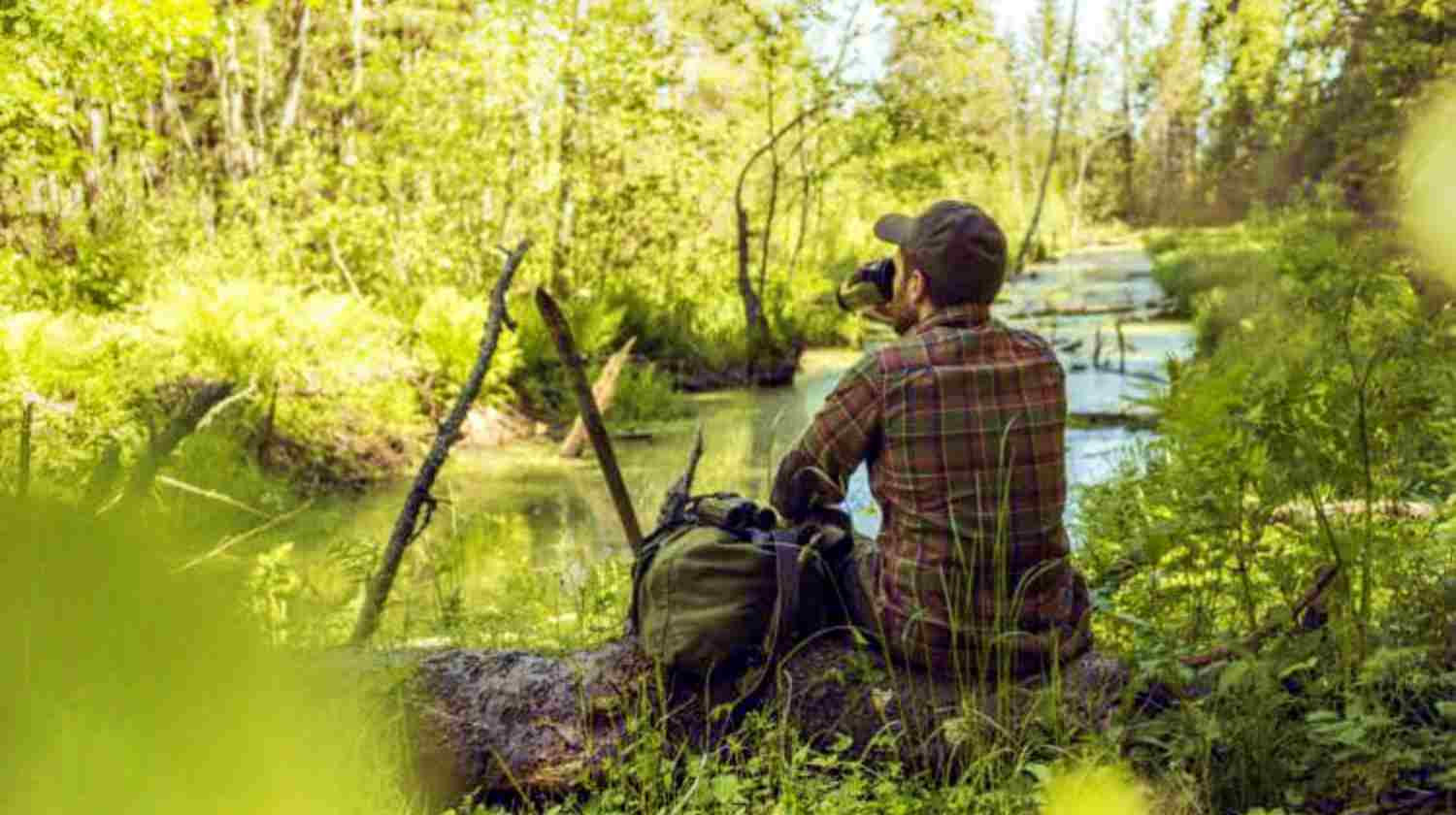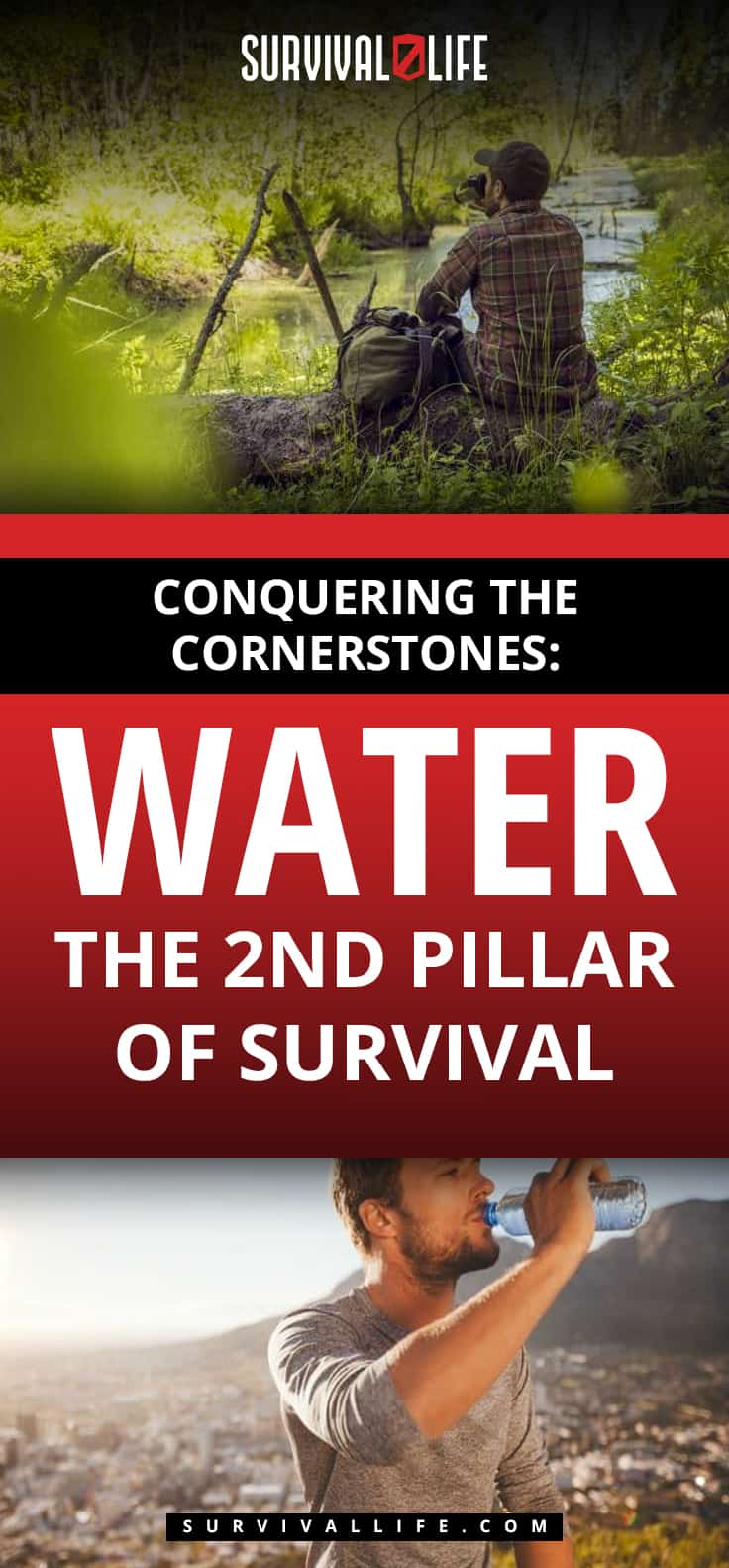Water
Conquering The Cornerstones: Water – The 2nd Pillar Of Survival

Explore water as one of the most important elements of survival and how you can have access to it should the need arises!
In this article:
- The Essence of Water for Survival
- Challenges of a Limited Access to Drinking Water
- Finding a Water Source
- How to Find a Water Source
- Creative Collecting
- Avoid Dehydration
- The Importance of Water in the Body
- Signs of Dehydration
- Safe Drinking Water
Water: The 2nd Pillar of Survival
The Essence of Water for Survival
From the 1st pillar of survival being shelter, we now go in deep to the second pillar of survival which is water. Having watched all seasons of Survivor, finding a water source always comes next after identifying the camp or shelter.
That is how essential water is to survival.
You’ve heard it said before that we can’t go a day without it. It’s credited time and again as the only actual necessity to sustain human life.
In fact, dehydration is one of the most painful sufferings anyone can experience. Thus, water is without a doubt one of the most basic elements of survival and life.
Challenges of a Limited Access to Drinking Water
Many outdoor survivors face challenges when it comes to staying hydrated out in the wild. Some of these problems include access to fresh water.
Along with that is ensuring the source isn't contaminated as well. It also includes how your body will cope without water for an extended period of time.
Here, we’ll explore all there is to know about drinking water and surviving outdoors. From this, you'll gain an even greater appreciation for the most necessary life source there is.
Finding a Water Source

When it comes to water and outdoor survival, the first thing to know and find is a good water source.
You should get ahead while you can when collecting your drinking water. The same goes for finding the source that will supply you for your time outdoors.
Many survivors abstain from drinking water from sources they fear contaminated. Others could be weak or tired from dehydration causing exhaustion and inability to go out and search for a reliable source.
The fear of water contamination is legitimate. Harmful side effects usually set in and take full effect quite immediately. Sadly, before the survivor has any chance to access reliable medical care.
How to Find a Water Source
We’ll take a look at how to determine safe drinking sources and even how to make your own purified water. These bits of info could end up just saving your life.
- Removes Bacteria & Parasites: The Microfiltration Membrane Removes 99.999999% Of Waterborne Bacteria...
- Removes Microplastics: Removes The Smallest Microplastics Found In The Environment (Down To 1...
- Rigorous Testing: All Claims Are Verified With Laboratories Using Standard Testing Protocols Set By...
Tip #1. Find a Vantage Point
To begin, if you’re really at a loss for a source, try to access the highest point you can find. This way you can better spot potential sources. That is if you have enough energy to make it up to a vantage point.
Tip #2. Check Low Lying Areas
You will most typically want to look for very low areas. Places surrounded by some type of vegetation are usually a good sign a water source is nearby.
Tips #3. Find Signs of Life
Some other signs to be mindful of are birds flocking to one specific area. Even animal tracks or droppings shows other life forms are going towards a life source.
Tip #4. Safety First
In their desperation for water, many survivors make some fatal mistakes. They attempt to venture down into rushing rivers or treacherous terrain to access water.
Do not do this. Instead, tie a lengthy rope or cord to some sort of container or water bottle. Next, lower the instrument down into the source, collect what is needed, and reel it back up to drink.
RELATED: Make a DIY Survival Water Filter | Survival Tips
Creative Collecting
One other creative way to collect water can be simply obtained with a plastic bag. While this method is time-consuming, it is ultimately effective.
A survivor can enclose a plant with a clear plastic bag (of course, ensuring that the plant remains rooted to the ground). This is to collect the moisture from its leaves and stem.
Water will then begin to condense on the inner surface of the bag. Then it will gather into droplets that fall and drain into the bottom. An estimated two to three cups of water can be had over a six-hour period using this method.
Avoid Dehydration
As mentioned, many survivors will not realize they are experiencing symptoms of dehydration. It proves to be life-threatening if continued.
The primary reason for this is survivors can still be drinking water on a daily basis. Yet, if the person is living in a very warm climate or does not take enough water during the day, it's a different story.
The same goes when you're using lots of physical exertion and energy to survive. The reality is dehydration can take hold of the survivor quite fast. Sadly, it can leave devastating effects also.
- Titanium Coated Razor Sharp Steel Blade - The HR-30 uses high-quality 440C Steel, for a perfect...
- Unique Notched Blade - Different from its cousin HR-15, the HR-30 adds a notched blade that allows...
- Spring-Assisted Opening - With the HR-30's spring assisted lightning fast open, in just seconds you...
The Importance of Water in the Body
The average person requires 2-3 liters of water per day to replenish what is naturally lost through sweat and breathing.
This need increases dramatically once dehydration sets in. These are crystal clear water facts for your body, indeed.
Signs of Dehydration
Thirst, irritability, nausea, and dizziness are the first telltale signs of dehydration. Signs most of us experienced at some point in our lives. This occurs when the body lost about 5% of its fluids.
Once this percentage jumps up to 10, you will experience dizziness, headache, an even an inability to walk. It is also accompanied by a tingling or numbness in the limbs. Essentially, the same effects experienced when you are drunk.
As the percentage increases, symptoms worsen. Symptoms include dimmed or loss of vision and a swollen tongue. A difficulty of hearing and even swelling in the brain also sets in.
Ultimately, the best chance of avoiding this fatal point is combating the lack or scarcity of water before the symptoms set in. Don’t wait until you first start feeling nauseous, cranky, or thirsty to fight it.
Safe Drinking Water
Lastly, it is helpful to understand some signs that point to an unsafe drinking source so these can be avoided at all costs.
First, check the color. Pure water is perfectly clear. Anything with a brown, yellow, or green tinge contains bacteria, waste, or some other contaminant.
Additionally, any sort of odor or foam/cloudiness in the water means that it is unsafe to drink. Even crystal clear mountain streams can be deceiving!
The absolute best way to ensure safety is to collect the water from your source. Next, bring it to a boil, then let it cool and drink. This will ensure that all bacteria or unsafe organisms are completely wiped out.
Watch this video from Vigilance Elite for 4 ways to filter water for survival:
Whether you’re roughing it in the great outdoors or simply running to your kitchen for glass, water is the ultimate pillar of survival. Knowing how to spot safe drinking sources and create your own means of purification will ensure that you have a healthy and safe experience in the wild.
Do you have any tricks yourself to secure water should supply dwindles? Share your tips with us in the comments section below!
Up Next: Conquering The Cornerstone: Fire – The 3rd Pillar of Survival
For awesome survival gear, you can’t make at home, check out the Survival Life Store!
Follow us on Facebook, Instagram, Twitte

Editor’s Note: This post was originally published on August 19, 2017, and has been updated for quality and relevancy.
Last update on 2024-11-21 / Affiliate links / Images from Amazon Product Advertising API
-

 Paracord Projects1 year ago
Paracord Projects1 year agoParacord Projects | 36 Cool Paracord Ideas For Your Paracord Survival Projects
-

 Paracord Projects1 year ago
Paracord Projects1 year agoHow To Make Paracord Survival Bracelets | DIY Survival Prepping
-

 Medical Care1 year ago
Medical Care1 year ago21 Home Remedies For Toothache Pain Relief
-

 Knife Laws1 year ago
Knife Laws1 year agoAre Switchblades Legal? Knife Laws By State
-

 Do It Yourself1 year ago
Do It Yourself1 year agoSurvival DIY: How To Melt Aluminum Cans For Casting







Pingback: Stay Hydrated | How To Stay Hydrated While Hiking [ Video] | Survival Life
Pingback: How To Stay Hydrated While Hiking [Video] | Primitive technology
Pingback: How To Stay Hydrated While Hiking [Video] - Survival Patch
Pingback: Survival Skills | What Every Survivalist Should Know | Survival Life
Pingback: Improvised Survival Gear | 7 DIY Projects For Preppers | Primitive technology
Pingback: Improvised Survival Gear | 7 DIY Projects For Preppers
Pingback: Self-Defense - The 4th Pillar of Survival: Conquering The Cornerstones
Pingback: How To Create A Dug Out Survival Shelter | Survival Life
Pingback: 5 Venomous Snakes and Their Look-Alikes | Survival Life
Pingback: Rain Barrel DIY | Do's and Don'ts of Building a Rain Barrel | Survival Life
Pingback: The Do’s And Don’ts Of Building Your First Rain Barrel – Ultimate Survival Alerts
Pingback: The Do’s And Don’ts Of Building Your First Rain Barrel - Survival Gear Review
Pingback: Non-Potable Water | Types and How to Spot Them - survival updates